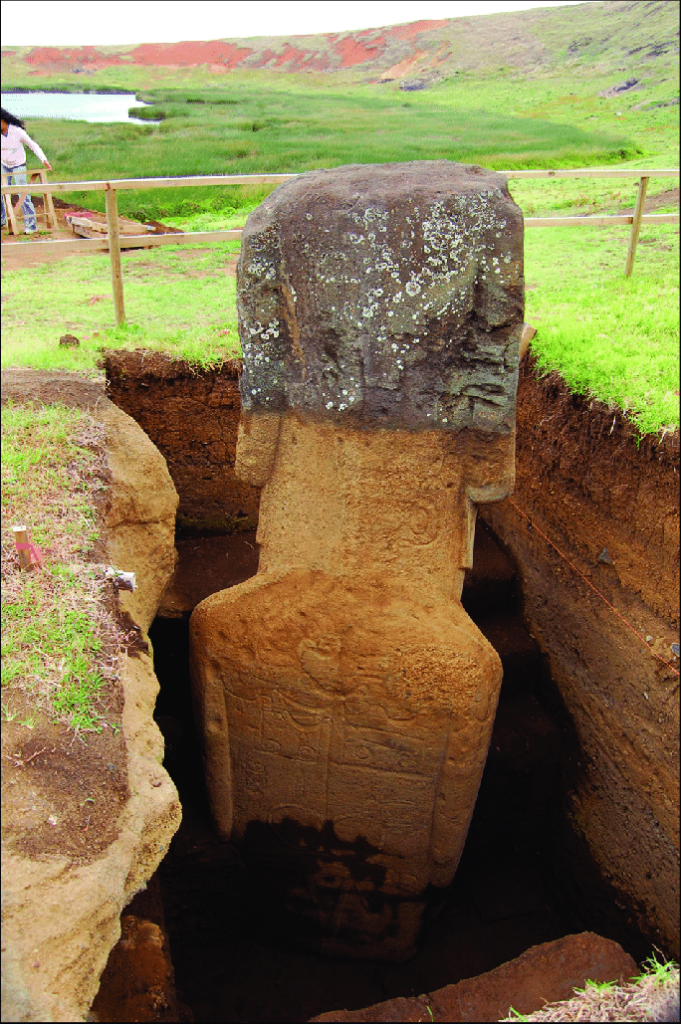Excavation of Easter Island’s Moai Statues: Detailed Carvings Revealed

Moai Statues of Easter Island
- Location: Easter Island (Rapa Nui), a remote volcanic island in Polynesia, part of Chile.
- Creators: The Rapa Nui people, who inhabited the island around 700 to 1100 AD.
- Purpose: The Moai statues were likely created to honor important ancestors and deities. They are believed to embody the spirits of the ancestors and were positioned to watch over the island communities.
Details of the Excavation
- Underground Bodies: While many people are familiar with the heads of the Moai, it was later discovered that these statues have full bodies buried beneath the ground. This photo showcases one such excavation where the body of the Moai is revealed.
- Excavation Projects: Projects like the one shown in the photo are part of ongoing archaeological efforts to better understand the construction, transportation, and significance of these statues. The Easter Island Statue Project (EISP) is one prominent effort that has undertaken extensive research and excavation.
Features of the Statues
- Material: The Moai are carved from volcanic tuff, a relatively soft stone. Some were also carved from basalt.
- Size: The statues vary in size, but they average around 4 meters (13 feet) tall. Some of the larger statues are over 10 meters (33 feet) tall.
- Carvings: As seen in the photo, the bodies of some Moai have intricate carvings and symbols, which provide insights into the Rapa Nui culture and their artistic capabilities.

Significance of the Discovery
- Cultural Insight: Excavating the bodies of the Moai provides valuable information about the Rapa Nui society, their beliefs, and their engineering skills.
- Preservation: Uncovering these statues helps in preserving them and protecting them from erosion and other environmental factors.
Conclusion
The photo of the Moai excavation highlights the hidden depths of these iconic statues and the ongoing efforts to explore and preserve the cultural heritage of Easter Island. It is a testament to the ingenuity and spiritual life of the Rapa Nui people, offering a deeper understanding of their remarkable achievements.